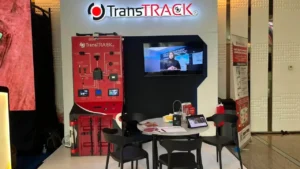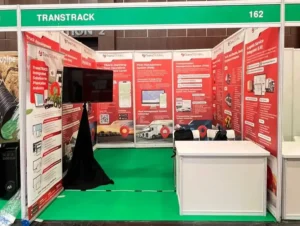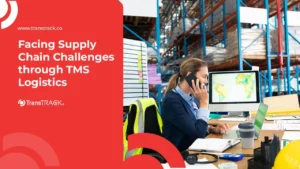What is a Bow of a Ship? Know its Function and Types Based on its Shape!
Posted on June 3, 2024 by Nur Wachda Mihmidati

The bow of a ship is the front part of a ship which is the starting point of the ship in forward movement. More specifically, it is the first part that will break the water as the ship moves forward. The design and shape of this part is very important because it affects the ship’s ability to move efficiently and stably on the water. Check out the following article TransTRACK for further explanation!
Bow of a Ship Function
The following is an explanation of the functions of the bow:
Breaking Waves Efficiently
The bow of a ship is designed to break water and waves in the most efficient way, thereby reducing drag and allowing the ship to move faster and with lower fuel consumption. A good design helps reduce water splashing and increases the stability of the vessel when traveling on water.
Maintaining the Right Direction
The bow helps in maintaining the ship’s course by providing a stable and straight starting point as the ship moves forward. This is essential for navigation and maneuvering of the vessel, especially in erratic weather conditions or when crossing narrow waters.
Guarding the Vessel from Impacts
The forward section, often reinforced to withstand collisions with objects in the water, such as debris or ice. A strong bow can reduce damage to the ship’s structure in the event of a collision, protecting the inside of the ship and increasing the safety of passengers and crew.
Facilitating Space for Multiple Purposes
This section is often used as a location for various equipment and facilities. For example, the bow can be equipped with anchors, mooring equipment, and other navigation equipment. The space at the bow can also be used for storage or other purposes according to the design of the vessel.
Breaking Waves Efficiently
This section is designed to break waves efficiently. The hydrodynamic shape of the bow helps reduce water resistance, allowing the vessel to move faster and be more fuel efficient. This design also reduces splashing water that can impair visibility and prevent damage to the top of the vessel. In addition, a well-designed bow helps improve the stability of the vessel when sailing in choppy waters by effectively cutting through the waves.
Keeping a Precise Course
This part plays an important role in keeping the ship on course. An optimized bow design helps the ship maintain a straight course while moving forward, which is crucial for accurate navigation, especially in the open sea. The bow also improves the ship’s maneuverability, allowing the ship to turn and maneuver better in narrow waters or in port. A well-designed bow also reduces the effects of wind and side currents, which helps maintain the ship’s directional stability and reduces the need for excessive rudder corrections.
Guarding the Vessel from Impacts
This section is often reinforced to protect the vessel from collisions with objects in the water such as debris, ice or other vessels. A strong bow is able to absorb and cushion the impact of the collision, reducing the risk of structural damage to the vessel. Additionally, in extreme sea conditions, a well-designed bow can cut through large waves and protect the vessel from damage caused by collisions with waves.
Facilitating Space for Multiple Purposes
This section is also used to facilitate various important purposes. Typically, the bow is equipped with anchoring devices, including chains and winches, which are used to moor the ship in port or while at anchor at sea. Space in the bow is also utilized to store navigational equipment such as radar, sonar, and navigation lights, as well as mooring tools to secure the ship at the dock. On some vessels, especially cargo ships or other large vessels, the bow can be used as additional storage space for certain items or emergency equipment. The bow can also be the location for various operational facilities such as small cranes, rescue devices and communication equipment.
Common types of bow
This section is designed with various forms and functions, depending on the operational needs and speed of the ship. In general, it can be categorized into two main types based on the desired speed: for high-speed vessels and medium-speed vessels.
Making high-speed ships
For high-speed vessels, the bow is usually designed with a highly hydrodynamic shape. One commonly used type of bow is the raked bow, which has sharp edges to cut through the water efficiently. This design helps reduce water resistance and increases the speed of the ship. A bulbous bow is also often used for high-speed vessels. This bow has an additional rounded structure at its bottom that helps change the water flow around the bow, improving fuel efficiency and reducing drag.
Making medium-speed ships
Meanwhile, for medium-speed vessels, the bow is usually designed to strike a balance between fuel efficiency and stability. The plumb bow is one of the commonly used types for medium-speed vessels. This bow has an almost vertical shape which provides advantages in cargo space and stability. The spoon bow is also often used on medium-speed vessels. This bow has a gentle curve that allows the ship to cut through the waves well, providing additional comfort by reducing vertical movement when encountering waves.
Types of Ship’s Bow Based on Shape
Types of ship bows can be distinguished based on their various shapes. Here are some types based on their shape:
1. Raked Bow
This bow has a sloping or forward leaning shape. This design is commonly found on high-speed vessels such as patrol boats or speedboats. The sloping bow helps reduce water resistance and increases the speed of the ship.
2. Plumb Bow
The plumb bow has an almost vertical shape, perpendicular to the waterline. It is usually found on large ships such as cargo ships or tankers. The upright bow allows for maximizing cargo space and provides extra stability.
3. Fishing Bow (Spoon Bow)
This bow has a gentle curve that resembles a spoon, especially on its underside. This design helps the ship cut through the waves better and reduces vertical movement when crossing waves. It is usually found on large passenger ships or cruise ships.
4. Angular Bow
This bow has an angular shape at the front. This design can help break waves more efficiently and provide additional stability. Elbow bows are commonly used on vessels operating in waters with harsh wave conditions.
5. Straight Bow
This bow has a straight shape without much curve or slope. This design is simple and is usually used on small vessels such as fishing boats or traditional sailing boats.
6. Bulbous Bow
This bow has an additional rounded structure below the water surface at the front of the bow. This design helps reduce water resistance, improve fuel efficiency, and reduce vibration and drag caused by waves. It is usually found on large ships such as cargo ships or tankers.
7. Tumblehome Bow
This bow has a bottom that protrudes outward, contrasting with the traditional bow that protrudes inward. This design can improve stability and minimize the risk of damage when at anchor or in contact with the dock.
Each type of bow has different advantages and uses depending on the needs and specifications of the ship.
This part of the ship does play an important role in determining the direction and stability of a ship at sea. Along with the development of navigation technology such as Hybrid GPS which combines satellite network and Global SIM Card, we are witnessing a transformation in the way ships operate.
With this technology, modern ships can not only better solve navigation challenges in vast and remote oceans, but also improve shipping efficiency and safety. Hybrid GPS technology provides reliability in positioning, while Global SIM Card extends signal coverage, even in areas with difficult signal conditions.
As such, TransTRACK is not only a leading navigation solution today, but also represents a step forward in improving the safety, efficiency and reliability of maritime operations. In the future journey of ships at sea, investment in advanced navigation technology such as TransTRACK will be an important and strategic step.
Topic :
 Bahasa Indonesia
Bahasa Indonesia









